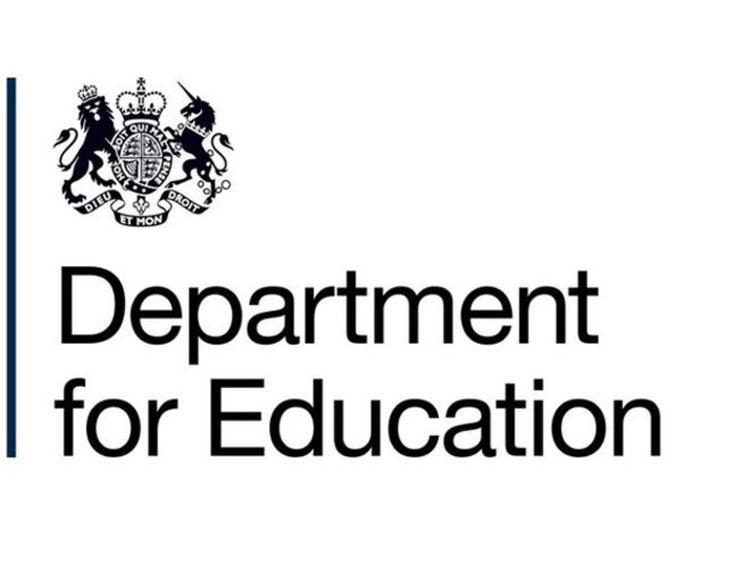16 to 19 education (Non Apprenticeship): market entry

Information about how to get ESFA funding for post-16 education and training.
Information
Information about how to get Education and Skills Funding Agency (ESFA) funding for education and training for students aged 16 to 19 and for High Needs Learners up to 25 with an Education Health and Care Plan (EHCP).
Organisations wishing to tender for funding to deliver education and training for adults are required to apply to be on the Register of Training Organisations.
Training organisations seeking to deliver apprenticeships are required to apply to join the Register of Apprenticeship Training Providers.
How to get ESFA funding for post-16 education and training
This page is about funding ESFA provides for colleges, independent learning providers, schools, academies and special post-16 institutions for the provision of education and training to students aged 16 to 19 (and up to 25 for those with EHCP).
This guidance is reviewed on an annual basis.
There are a number of ways to enter this market dependent on the type of institution and the type of provision proposed.
It is a legislative presumption under the Education Act 2011 all new schools should be academies. You can apply to open different types of academy including:
- academies
- free schools
- university technical colleges (UTCs)
- studio schools
Some of the processes for establishing these types of institution are subject to fixed application windows.
Periodic tendering opportunities
Gaps in provision
Under EU procurement law, we do not always have to tender for the delivery of education and training opportunities for this age group. However, when we do fund a new provider or new provision there is an expectation processes and procedures are fair and transparent.
Therefore, we use a mix of local negotiation and tendering appropriate to the circumstances in each case.
In support of local authorities’ statutory duty to secure provision in an area, we will consider their requests to fill a gap in provision. Where evidenced gaps cannot be filled through negotiation with good existing providers they are put out to tender through open competition and advertised through ESFA’s Update and on ‘Contracts Finder’, the government’s site for advertising its contract opportunities.
Local authorities may submit a case regarding a gap in provision at any point in the year. Cases should be made using a standard template:
Market entry LA gaps application template (MS Word Document, 59.8KB)Market entry LA gaps application template (ODT, 52.5KB)
We will apply standard criteria to ensure the gap is well evidenced prior to securing additional places.
Replacement provision
We may seek to replace provision lost through a market failure or forced exit by government intervention or a voluntary exit created by a provider’s own business decision.
Subject to circumstances we may negotiate with local providers about replacing provision. Where replacement provision cannot be secured through an appropriate existing provider(s) it will normally be put out to tender through open competition and advertised through ESFA’s e-bulletin and on Contracts Finder.
Where the need to secure alternative provision for existing students is urgent, ESFA may elect to make a single tender award in line with its internal scheme of delegation.
New high-quality provision
We want to ensure opportunities for developing new outstanding provision are always available.
ESFA will fund new provision where it adds value and is a high quality addition to the existing offer for young people. To this end, we are open to discussions about new provision for young people aged 16 to 19 with independent learning providers (ILPs) without an ESFA contract for delivery to 16 to 19s currently holding (or receive in the course of the year) an Ofsted rating of grade 1 outstanding for overall effectiveness.
We will only support new provision as part of this process. We will not consider approaches seeking to move sub-contracted provision to a directly funded contract.
Understanding the difference between types of institution
Types of schools
GOV.UK gives information about submitting:
In addition, there are a number of other ways organisations interested in delivering education and training can enter the education and training market, which are explained below.
Establishing a further education or sixth-form college
As specified in Section 33C of the Further and Higher Education Act 1992, any person or body can request that Secretary of State establish, by order, a new sixth-form college corporation:
http://www.legislation.gov.uk/uksi/2010/2609/made
The legal power to establish and incorporate FE Corporations sits with the Secretary of State through the Further and Higher Education Act 1992.
Further information about the process can be found within the document Dissolution, Merger and Establishment of FE Corporations available from the Association of Colleges.
Expanding a school or academy by adding a sixth-form
A maintained school can apply to its local authority if it wishes to extend the age range of its school to add a sixth-form. For more information you can find guidance about changes to a school and expansions on GOV.UK.
The Secretary of State retains responsibility for decisions to make significant changes to academies. If an academy wishes to extend its age range to add a sixth-form it should submit a business case using our online enquiry form.
In order to make a decision, the Secretary of State will need to know:
- the rationale for the proposal, including the demand for the additional provision and the educational benefits to students
- the degree of support from the local authority, the local community and parents
- evidence of the school’s ability to deal with the change, specifically in terms of leadership and governance
- any proposed changes to the way the school is governed and suggested changes to admissions arrangements
- issues around the existing school site, including any plans for capital adaptations, additions, refurbishments and land transfers needed
- cost effectiveness in terms of capital and recurrent funding (the proposal should include some indicative costings and proposals for how costs might be met)
Please read the guide on making significant changes to an existing academy for more information.
Other ways 16 to 18 education and training can be funded
There are other ways post-16 provision can be funded, these are set out below.
High needs students (HNS) 16 to 25 years
The due diligence process for special post-16 institutions, updated in October 2019, is the means by which ESFA assures itself institutions commissioned by local authorities for 10 or more high needs places are suitable to receive public funding from ESFA for the delivery of high needs provision.
T Levels
The first 3 T Levels will be rolled out from 2020, starting with a selected group of providers and the range of T Level pathways and delivery institutions will increase as we move towards all T Levels being available in 2024.
Once T Levels are fully rolled out, local authorities will be able to submit evidence to us of local gaps in technical education so that we can review these and take action.
More information on T Levels can be found on GOV.UK.
Sub-contracting
As part of our funding guidance, ESFA publishes sub-contracting control regulations, which set out our expectations and requirements of directly funded institutions entering into sub-contracting arrangements in respect of ESFA-funded provision.
Maintained schools and academies are reminded it’s a requirement sub-contracted activity is recorded in the school census return.
The requirements for sub-contracting are set out in the guidance note on GOV.UK.
ESFA is currently reviewing its sub-contracting arrangements and current rules are likely to change in 2020 to 2021
Contract transfer
Organisations cannot novate or transfer ESFA contracts. In limited circumstances we may sanction the transfer of a contract from a lead contractor to an existing sub-contractor.
Contract transfer to a sub-contractor can only occur with the written agreement of the lead contractor. The written agreement of the lead must include confirmation that they are willing to relinquish the funding associated with the subcontracted provision in the year in which it transfers. We must also be satisfied the sub-contractor has the capacity and facilities to deliver high quality provision in its own right.
Any such applications should be sent using our online enquiry form.
The appropriate funding limit for the existing sub-contractor will be set as part of the financial information supplied as part of due diligence.
Mergers, takeovers and other structural change
Organisations should inform ESFA of any plans involving merger or takeover of the provider, or of any other change which will have a material bearing upon the contract or funding agreement it holds with ESFA, as soon as it becomes aware of such a change.
It is a requirement of the funding agreement with ESFA providers give ESFA a minimum of at least 12 weeks notice in advance of the proposed date of effectiveness of the change in such cases. Giving notice of a change in business model does not constitute ESFA’s consent to a transfer of our contract.
ESFA will review any proposed changes on a case by case basis and will undertake the due diligence and other assurances it considers necessary according to the circumstances of each case. ESFA reserves the right to terminate the contract where any proposed assignment, novation, disposal or other dealing gives cause for material concern.
Independent Learning Providers providing education and training to children of compulsory school age
ILPs are required to register with the Department for Education (DfE) that they are running an independent school if they meet the definition of an independent school set out in law. Guidance is provided in relation to the definition and the process of registration in the departmental advice.
Those responsible for running an ILP that meets the definition of an independent school that is not registered as such would be committing an offence (under section 96 of the Education and Skills Act 2008 – “the 2008 Act”) and may be liable to prosecution.
Published 10 March 2014
Last updated 10 January 2020 + show all updates
- Updated ILP section to clarify the position relating to Independent Learning Providers and the provision of education and training for children of compulsory school age and added information about T Levels.
- 16 to 19 education market entry has been updated for 2017 to 2018.
- Updated document added for the academic year 2016 to 2017.
- Updated to remove information about funding streams that have ended or no longer managed by EFA
- Information on sub-contracting for 2015 to 2016 added
- First published.











Responses